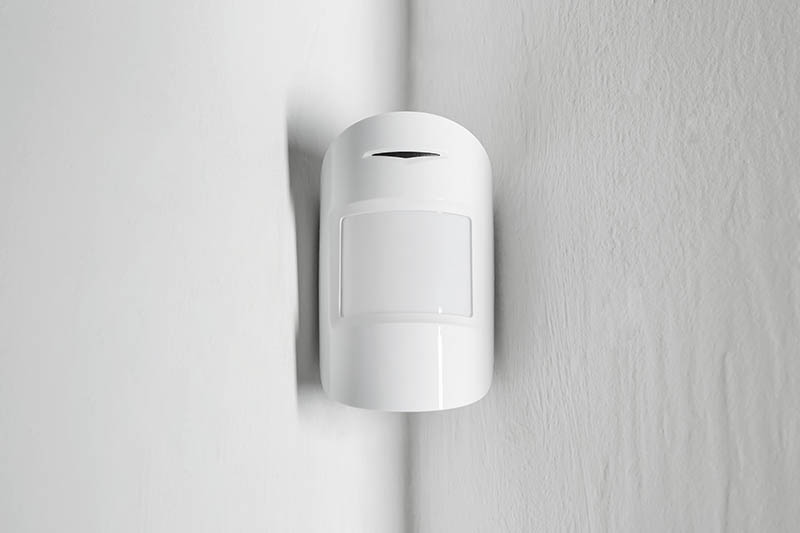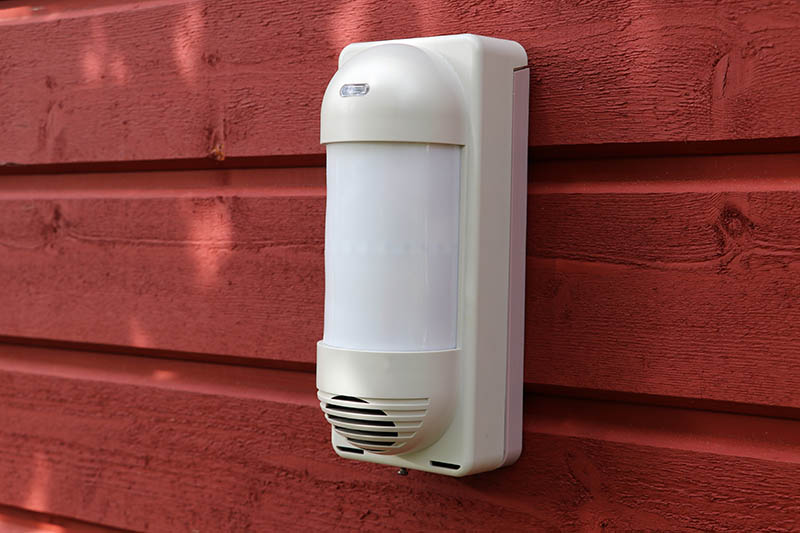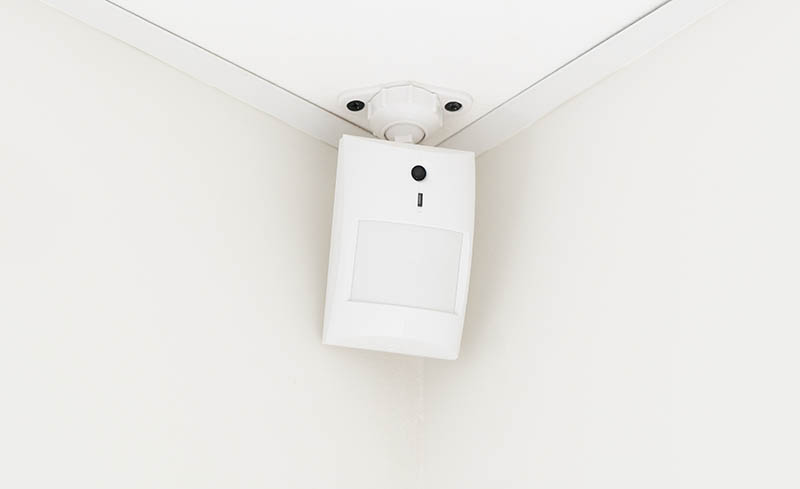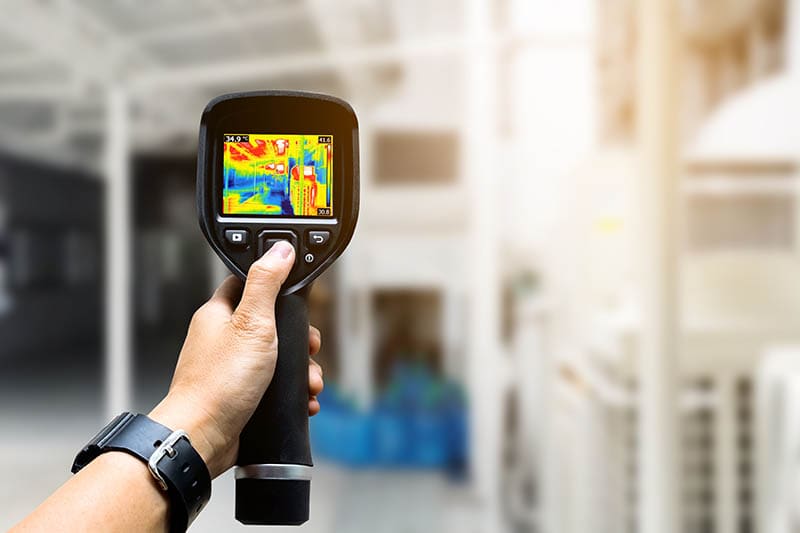How Does an Infrared Sensor Work? Types, Uses, & FAQs
Last Updated on

Today, the application of IR technology is no longer breaking news. We’ve used it to better our everyday lives at home, and even to make work a little bit easier. Take the TV, for example. In the 60s and 70s, you had to stand up from where you were seated and go flip some buttons to change the station.
Then came the 80s, and we were introduced to the “zap-tastic”—a TV remote that made it possible to remotely change stations. The point is, we now have electronic systems (like the TV) that rely on IR sensors to interpret and comprehend the signals being transmitted by devices that have been designed to operate remotely.
What are the prime benefits? Well, the list is endless, but we’ll name a few: their power usage is significantly low, the design is often ergonometric, and the features are very convenient. For the record, no IR signal can be seen by the naked human eye. They are all invisible.
Anyway, that’s just a brief rundown of what’s in-store today. Let’s kick this off by describing what an IR sensor is, just to be certain that we’re all on the same page.

What Is an Infrared Sensor?
Otherwise known as the IR sensor, it’s an optoelectronic component that’s sensitive to radiation. With the help of an IR sensor, you can detect motion in your immediate surroundings, or measure the amount of heat being emitted by an object.
If you get the opportunity to study the infrared spectrum, you’ll learn that all objects on this planet radiate some degree of thermal radiation. You don’t know it yet because the nature of these radiations makes it virtually impossible for our eyes to detect them. But the good news is, we have infrared sensors. The components are designed to “detect” what’s undetectable.
When it comes to IR technology there is the detector and emitter. The former is normally used in reference to the IR Photodiode, while the latter refers to an IR Light Emitting Diode (LED).
The Photodiode has been designed to be sensitive to infrared light that falls on the same wavelength as that which is being emitted by an infrared LED. The minute the infrared waves get in contact with the Photodiode, they inevitably change the output voltages and resistances, proportionally to their magnitude.

How Does an Infrared Sensor Work?
Think of the infrared sensor the same way you would an object detection sensor. The principle behind these two devices is very similar, save for the fact that the IR sensor has an LED and Photodiode to emit and detect. The combination of the two is what gives us the Optocoupler, also known as the Photo-Coupler.
The IR Light Emitter Diode is a special kind of transmitter that can emit infrared radiation. The said diode resembles the quintessential diode, but the radiation being generated won’t be detectable to the naked eye. This math equation will always be simple in the sense that you have infrared receivers on one hand and transmitters on the other. The receivers are mainly tasked with detecting any emitted radiation by leveraging the abilities of the IR transmitters.
The receivers take the form of a Photodiode. But the Photodiode is not the same as your standard Photodiode, because this one only comes to life in the presence of infrared radiation. And before it slips our minds, it’s important to note that the IR receivers are different based on the package, wavelength, voltage, and several other factors.
For an infrared sensor to be effective as both a transmitter (IR LED) and receiver (IR Photodiode), the wavelengths must be equal. You’ll never find a scenario where the transmitter’s wavelength and that of the receiver are oscillating differently. If that happens, the Photodiode won’t be able to respond to the IR light that’s being emitted by the LED.

What Are the Different Types of IR Sensors?
Earlier on, we mentioned and gave a brief description of what a passive IR sensor is. In this section, we want to expand on that and also talk about the second type of sensor, which is the active IR sensor.
Active IR Sensor

In simpler words, an active IR sensor comes with both the transmitter and receiver. If you take a closer look at the electronic applications that have this type of sensor, you’ll see that the LED acts as the source. This Light Emitting Diode will be the non-imaging IR sensor, hence different from the laser diode, which is essentially applied as an imaging IR sensor.
Active infrared sensors have been designed to operate using energy radiation. So, when you see them receive or detect some signals, just know there’s some form of radiation around. The signal information is processed and interpreted using something called the signal processor.
The break beam sensor and reflectance are both perfect examples of the active IR sensor.
Passive IR Sensor

The passive sensor lacks a transmitter but has detectors. For transmission, they often rely on a device capable of transmitting or an IR source. The device has to be able to emit energy radiation, and detect the same, through IR receivers. Once the signals have been received, they’ll be decoded and the information relayed to the next phase.
The passive IR sensors are again classified into two. You’ll either be working with a quantum IR sensor or a thermal IR sensor. A thermal IR sensor doesn’t quite rely on wavelengths, but on heat waves. However, there’s a downside. And it’s the fact that their response and detection time are relatively slower.
A quantum IR sensor is a photodetector that utilizes the electronic intersubband transitions found in the quantum well to take in photons. That’s just a fancy way of saying that it fully relies on wavelengths, thus giving it a high detection and response time.
The only problem is, to get accurate measurements, you’ll have to find a way to cool them occasionally. The pyroelectric detector is an incredible example of what a quantum IR sensor is.

Where Is the Infrared Sensor Used?
Infrared sensors are further divided into different types, with respect to their usage. For instance, if you feel the need to synchronize the speed of various motors, you could go for the speed sensor. At industrial production plants, you’ll find workers working with temperature sensors, because operating those heavy pieces of machinery often generates a lot of heat.
You probably have an automatic door opening system installed back home, right? Well, surprise, surprise. That system has a passive IR sensor that’s meant to detect any human roaming around the house. It usually has a detection range of 15 to 40 feet.
Those are just a few examples of the IR application in our daily lives. Some of the other sensor-based projects that you should know about include:
Gas Analyzers
Gasses usually have absorption properties that lie within the infrared regions of an electromagnetic spectrum. And that’s the reason why you’ll find infrared sensors featured in different gas analyzers. Their prime purpose is to assist us to measure the density of various gasses, in one of two ways. You could either use the dispersive method or take the nondispersive route.
The dispersive option involves the emission of light, which is then spectroscopically divided before the absorption properties are applied to analyze the gas sample quantity and ingredients. In the case of the nondispersive method, there’s no emission of light. The absorption properties are still applied, but in the presence of discrete optical bandpass filters.
This robotic application is commonly known as Nondispersive IR technology, and it’s mainly used in commercial infrared instruments. For example, the ones found in the automobile industry where they deal with exhaust gas leakages.
A dispersive gas analyzer is mostly used in the carbonated drink industry.
Radiation Thermometers
Radiation thermometers are not foreign concepts. They have sensors that detect the IR being emitted by an object, while simultaneously measuring its temperature based on the total amount of IR radiation.
This is a non-contact type of sensor. Meaning, you’ll be able to get accurate measurements, as the scores won’t be compromised or influenced by the touch of the sensor. What’s more, the response time will be faster, and getting the pattern measurements won’t feel like a chore.
Moisture Balances
Moisture balances are the same devices that some people call moisture analyzers. They are useful to those looking to measure the moisture content available in different gas, liquid, and solid samples. To get an accurate measurement, the analyzers usually apply the Loss On Drying method.
The sensors are installed in the heat generating systems. Most analyzers rely on halogen, but some of them use infrared heaters. The work of the sensor is to help the user to figure out what single setting is ideal for heating all the samples evenly.
Flame Monitors
Flame monitors serve two functions: monitor the burning flames and detect any light being emitted. The emissions have a radiation score that’s found in the ultraviolet and infrared regions of the spectrum. We have so many types of detectors featured in flame monitors, but the most common ones are the pyroelectric, two-color, PbSe, and PBS detectors.
- They are not impacted by corrosion or oxidation
- They are reliable, seeing as they don’t depend on light
- Their power usage is efficient
- They are no-contact devices
- Have a high noise immunity
- Sensitive to dust, mist, fog, rain, etc
- The data transmission rate is incredibly low
- Demands a clear line of sight to function effectively
- Relatively limited range


Frequently Asked Questions (FAQs)
What’s the Function of Infrared?
Infrared can be useful in several ways, and not just as heat sensors. If you dig up a few sources, you’ll learn that this electromagnetic radiation is also a useful tool in networking, communication, thermal imaging, and even night vision pieces of equipment. Wired or not, infrared can be useful for any operation.
Are Infrared Sensors Dangerous?
Most things have the potential of causing harm when used the wrong way. Even though we’ve never heard of cases where someone got injured after being exposed to infrared sensors, that doesn’t mean that you shouldn’t exercise caution. That being said, this technology is largely safe and reliable.
Can You Operate IR Sensors In the Dark?
If we couldn’t operate these sensors in the dark, the PIR motion sensors would only be operational during the day, and useless at night. But we all know that’s not the case. The fact that infrared energy is not visible doesn’t imply that it’s not always present or detectable in a dark environment.

Final Thoughts
We’ll wrap this up by reminding you that the infrared is part of the electromagnetic spectrum, and lies between the microwave and visible light. That region has a wavelength range of about 700 nanometers to 1 millimeter. Far-infrared (being the farthest from visible light) has the longest wavelength and is considered the hottest.
That’s all you need to know about infrared sensors and their working principles. Be sure to let us know in the comments should you have any questions.
You Might Also Be Interested In: What is Satelite Imaging?
Featured Image Credit: Pixel-Shot, Shutterstock
About the Author Robert Sparks
Robert’s obsession with all things optical started early in life, when his optician father would bring home prototypes for Robert to play with. Nowadays, Robert is dedicated to helping others find the right optics for their needs. His hobbies include astronomy, astrophysics, and model building. Originally from Newark, NJ, he resides in Santa Fe, New Mexico, where the nighttime skies are filled with glittering stars.
Related Articles:
How to Clean a Refractor Telescope: Step-by-Step Guide
How to Clean a Telescope Eyepiece: Step-by-Step Guide
How to Clean a Rifle Scope: 8 Expert Tips
Monocular vs Telescope: Differences Explained (With Pictures)
What Is a Monocular Used For? 8 Common Functions
How to Clean a Telescope Mirror: 8 Expert Tips
Brightfield vs Phase Contrast Microscopy: The Differences Explained
SkyCamHD Drone Review: Pros, Cons, FAQ, & Verdict
